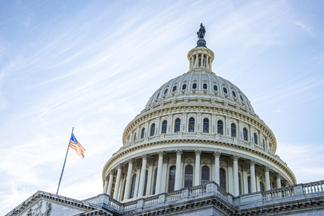
The vote came despite a veto threat from Biden, and overwhelming disapproval from Democrats in the House and Senate, who maintain that Congress should raise the debt limit without spending cuts or other conditions
WASHINGTON, D.C. (TIP): House Republicans on Wednesday, April 26, approved a bill that would raise the debt ceiling, slash federal spending and repeal President Biden’s programs to combat climate change and reduce student debt, defying Democratic objections in a move that inched the United States closer to a fiscal crisis.
Ignoring repeated warnings that the GOP’s brinkmanship could unleash vast economic turmoil, Speaker Kevin McCarthy (R-Calif.) muscled his narrow, quarrelsome majority toward a 217-215 vote, accelerating a high-stakes clash with the White House with as few as six weeks remaining before the government could default.
For House Republicans, the outcome marked a realization of a risky wager they placed after assuming a majority this January: They bet they could use the debt ceiling, the legal limit on how much money the country can borrow to pay its bills, as political leverage. Since Congress must pass a new law to raise or suspend the cap, the GOP seized on the possibility of a looming fiscal doomsday to try to extract policy concessions from Biden.
“The sad part here is, now the Democrats need to do their job,” McCarthy said immediately after the vote. “The president can no longer ignore [it] by not negotiating.”
Reacting to the vote, White House press secretary Karine Jean-Pierre said in a statement the bill had “no chance of becoming law,” pointing to the president’s position that the debt ceiling should be raised without conditions to prevent any harm to the U.S. economy. Senate Democrats, meanwhile, held firm in their own refusal to consider such a measure: Earlier in the day, Majority Leader Charles E. Schumer (D-N.Y.) took to the chamber floor to blast the GOP for “hostage-taking” and fault the party for bringing the government “dangerously closer to defaulting.”
Repeatedly, Republicans lifted the limit without conditions under President Donald Trump — while Democrats, who abhorred Trump’s policies, still supplied their votes in a bid to protect the country’s economic standing. With Biden, however, GOP leaders justified their new ultimatums by pointing to the nation’s roughly $31 trillion in debt, an imbalance to which both parties have contributed meaningfully.
It still took a series of late-night compromises with restive moderates and conservatives before McCarthy could pass the legislation, earning the cheers of his conference once the gavel sounded on the vote. But with no bipartisan resolution in sight — and no plans for McCarthy and Biden to meet — the final tally only raised the odds that a divided, gridlocked Washington could stumble into an unprecedented fiscal catastrophe.“It is no secret the circus is in town this week,” charged Rep. Pete Aguilar (D-Calif.), the chair of the House Democratic Caucus, at a news conference earlier Wednesday. “Every minute wasted on Speaker McCarthy’s empty gesture is a minute we get closer to default.”The Republican proposal, dubbed the Limit, Save, Grow Act of 2023, would raise the borrowing limit into next year — either until the government incurs another $1.5 trillion in arrears, or through the end of March 2024, whichever occurs first. Republicans coupled the increase with aggressive caps on federal spending, rolling back the budgets for key agencies to the levels adopted in the 2022 fiscal year and then limiting future growth to 1 percent annually for the following decade.
In total, these and other cuts are expected to save the government roughly $4.8 trillion over the next 10 years, according to the nonpartisan Congressional Budget Office, which analyzed the legislation earlier this week. Republicans have promised to focus those cuts on federal health care, education, science and labor programs, while sparing defense. The party’s measure also would repeal Biden’s recent accomplishments, including a bevy of tax credits meant to spur the adoption of electric vehicles and other clean technologies. It would end the president’s plan to waive up to $10,000 from millions of borrowers’ student loan debts. It would limit the power of federal agencies to issue regulations on a wide array of industries. And it would impose a raft of new rules on low-income families that receive federal benefits, including food stamps and Medicaid, requiring them to work longer hours in exchange for help — or risk losing aid entirely.
“It’s not wild, and it’s not reckless. It is responsible to do that. You can raise the debt ceiling, you can pay your bills, and you can protect the future for our children,” said Rep. Jodey Arrington (R-Texas), the chairman of the House Budget Committee, who led the party in floor debate.
What is the debt ceiling?
It’s a restriction Congress has put on how much money the federal government can borrow to pay its bills, which has been in place since 1917. Because the government usually spends more than it takes in, Congress needs to raise the debt ceiling fairly frequently to pay for its operations. (Sort of like a credit card bill.)
What is a default?
If Congress doesn’t raise the debt ceiling, the government can’t borrow and might not be able to pay its bills on time (like bond interest). That’s called a default, and it’s never happened before on this scale (though the U.S. got close in 2011). It would likely tip the U.S. into a recession and shake the global economy.
Why does the U.S. keep raising the debt limit?
Congress needs to raise the debt ceiling so the U.S. can keep issuing bonds, which investors around the world buy because they’re seen as a safe and reliable investment. In turn, the government can fund projects from the military to social programs.
Why is raising the debt limit a fight?
Until recently, it was routine for Congress to raise the debt ceiling. Since 1960, Congress has intervened 78 times to change it in some way. But it has become a political battle because it is one of the few must-pass bills, so lately Republicans have seen it as an opportunity to make demands.
Technically, the United States reached the $31 trillion debt ceiling in January, prompting the Treasury Department to begin taking what it calls “extraordinary measures” to prevent the country from defaulting. But those accounting moves are only temporary solutions meant to buy more time for Congress to act — though exactly how long they have before the deadline, known in Washington as the “x-date,” remains unclear.
The Treasury Department has warned a default is possible as soon as June, while the CBO has said it could be as late as September. Lawmakers had been counting on the later date until a series of recent updates — including a report from analysts at Goldman Sachs issued last week — said they could not rule out an early summer deadline as a result of unexpected changes in federal tax revenue.
No matter the timeline, economists widely agree that the consequences of inaction could be stark: A default would devastate the U.S. economy, which already finds itself on the precipice of recession, resulting in millions of job losses and substantial swings in the stock market. Even the mere prospect of such a calamitous fiscal event threatens to exact a severe toll: When Republicans seized on the debt ceiling for political leverage in 2011, for example, the tumult triggered a downgrade in the government’s credit rating, costing taxpayers more than $1 billion in higher interest costs. In recent weeks, though, Republicans appeared to shrug off the potential ramifications. Setting the stage for the House debate, McCarthy took his message last week directly to the New York Stock Exchange, where the Dow Jones industrial average fell by about 2,000 points more than a decade ago amid a series of summer battles over the debt ceiling. The speaker pledged that his majority would not allow the government to default, even as he told an increasingly skittish Wall Street that debt ceiling negotiations offered an “opportunity to examine our nation’s finances.”





Be the first to comment